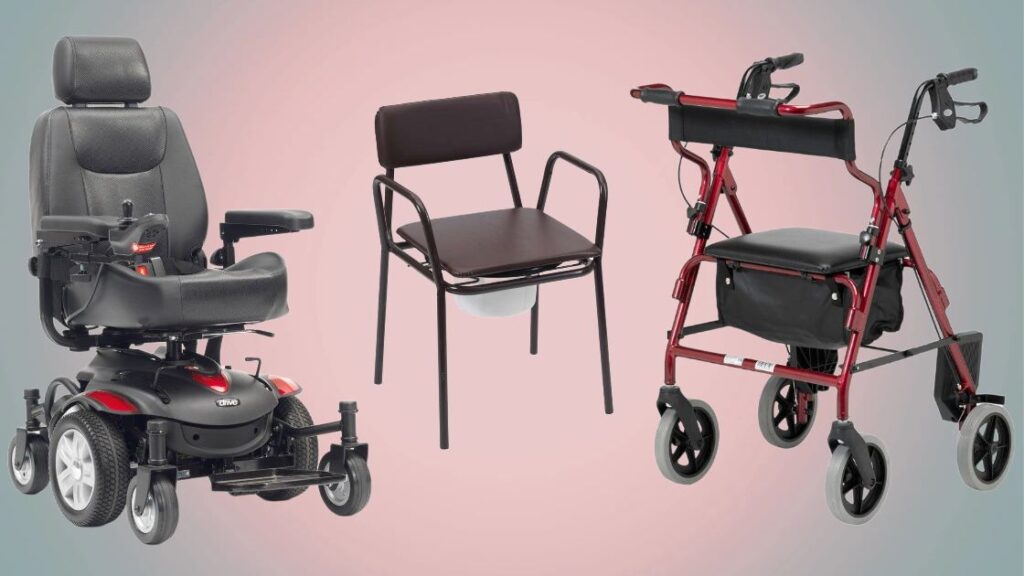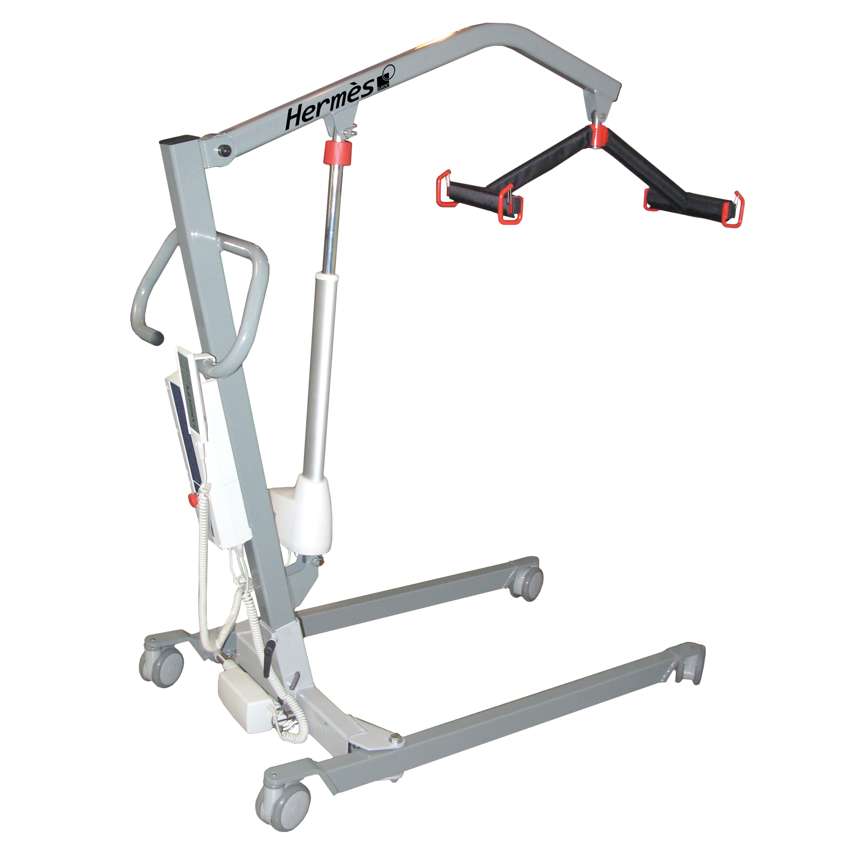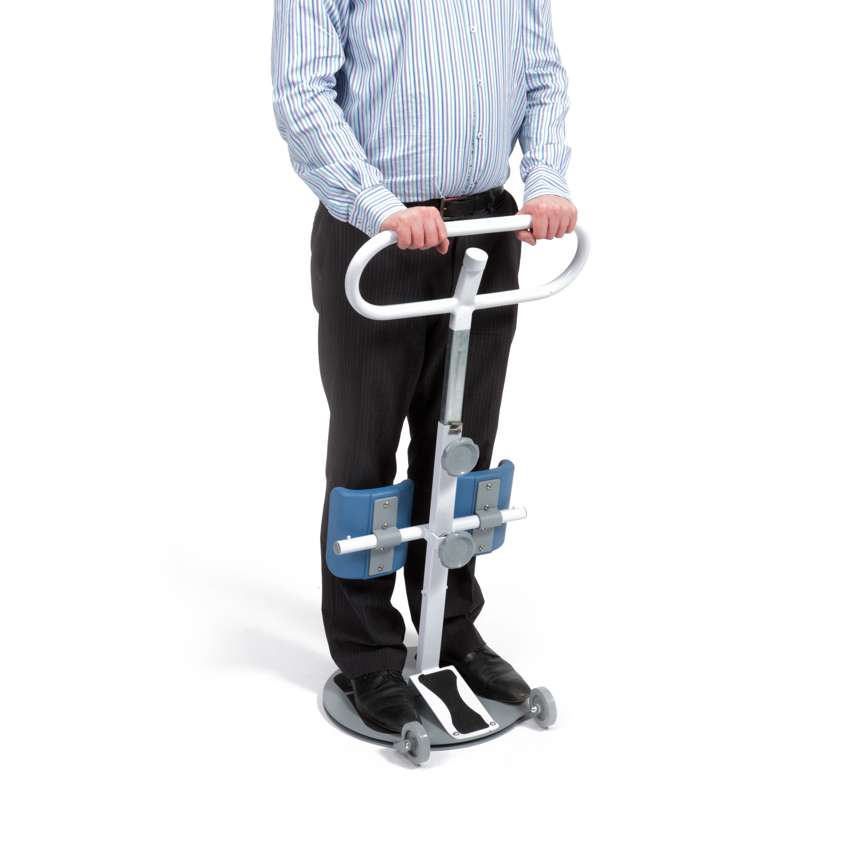
Looking for ways to enhance independence and improve the quality of life for individuals with disabilities? You've come to the right place. In this comprehensive guide, we will delve into the world of disability aids and discover how they can make a significant difference in the lives of those who need them.
From mobility aids such as wheelchairs and walking sticks to assistive technologies like hearing aids and screen readers, there is a wide range of disability aids available today. These aids are designed to address the unique challenges faced by individuals with disabilities and empower them to live their lives to the fullest.
Whether you are a person with a disability seeking solutions or a caregiver or family member looking for options, this guide will provide you with valuable insights and practical advice. We will explore different types of disability aids, their functionalities, and their applications in various contexts. Additionally, we will discuss key factors to consider when choosing disability aids and share tips for optimizing their usage.
Get ready to embark on a journey towards greater independence and improved quality of life. Let's start exploring the world of disability aids together!
Understanding disability aids
Disability aids are devices, tools, or equipment designed to assist individuals with disabilities in their daily lives. These aids help overcome barriers, improve mobility, enhance communication, and enable individuals to perform tasks they would otherwise find challenging. They play a crucial role in promoting independence and autonomy for people with disabilities.
There are different types of disability aids available, each catering to specific needs and requirements. Mobility aids, for example, include wheelchairs, walkers, crutches, and canes, which help individuals with mobility impairments move around more easily. Assistive technologies, on the other hand, encompass devices like hearing aids, communication boards, and screen readers, which assist individuals with sensory impairments in communicating and accessing information.
Disability aids are not limited to physical devices; they also include software applications and online tools designed to improve accessibility and usability for individuals with disabilities. These aids can make a significant difference in the lives of those who need them, enabling them to navigate the world with greater ease and independence.
Different types of disability aids
Mobility aids are devices designed to assist individuals with mobility impairments, allowing them to move around more easily and safely. Wheelchairs, one of the most common mobility aids, come in various types, including manual wheelchairs, electric wheelchairs, and lightweight wheelchairs. These devices provide individuals with the freedom to navigate their surroundings and participate in activities without relying on others for assistance.
Walking aids such as crutches, canes, and walkers are also widely used to support individuals with mobility limitations. Crutches provide additional support and stability for those with leg injuries or weakness, while canes help individuals with balance issues maintain their stability. Walkers offer a more significant level of support and are ideal for individuals who require extra balance assistance.
Assistive technologies
Assistive technologies are devices that assist individuals with disabilities in various aspects of their lives. These technologies are designed to overcome barriers and facilitate communication, learning, and independence. One example is hearing aids, which amplify sound and improve hearing for individuals with hearing impairments. These devices help individuals participate in conversations, enjoy music, and engage in daily activities with greater ease.
Communication aids, such as communication boards or speech-generating devices, assist individuals with speech impairments in expressing themselves and communicating effectively. These aids can be especially valuable for individuals with conditions such as cerebral palsy or autism, enabling them to interact with others and convey their thoughts and needs.
Screen readers and magnifiers are assistive technologies that help individuals with visual impairments access digital content. Screen readers convert text into synthesized speech or braille, while magnifiers enlarge text and images on screens. These aids enable individuals with visual impairments to navigate websites, read documents, and use digital applications independently.

Daily living aids
Daily living aids are devices that assist individuals with disabilities in performing day-to-day activities and tasks. These aids are designed to enhance independence, efficiency, and safety in various aspects of daily life, from personal care to household chores. Examples of daily living aids include dressing aids, kitchen tools adapted for individuals with limited dexterity, and adaptive utensils for eating.
Bedroom aids, bathroom aids, and mobility aids for the home are also essential in creating a safe and accessible living environment for individuals with disabilities. Grab bars, raised toilet seats, and shower chairs help individuals maintain their independence and reduce the risk of falls in the bathroom. Bed rails and bed transfer aids assist individuals in getting in and out of bed safely.
Visual aids
Visual aids are devices or tools that assist individuals with visual impairments in accessing and interpreting visual information. These aids help individuals with low vision or blindness navigate their surroundings, read printed materials, and perform various tasks that require visual perception. Examples of visual aids include magnifying glasses, screen magnifiers, braille embossers, and tactile maps.
Visual aids are particularly valuable in educational settings, enabling students with visual impairments to access educational materials and participate in classroom activities. They can also be used in workplaces to promote accessibility and ensure equal opportunities for individuals with visual impairments.
Benefits of using disability aids
The use of disability aids offers numerous benefits for individuals with disabilities. These aids can significantly enhance independence, improve quality of life, and promote inclusion in various aspects of everyday life. Let's explore some of the key benefits of using disability aids.
Improved mobility and accessibility
Mobility aids such as wheelchairs, walkers, and canes enable individuals with mobility impairments to move around more freely and independently. These aids provide stability, support, and assistance, allowing individuals to navigate their surroundings, access public spaces, and participate in social activities. By enhancing mobility, disability aids help individuals with disabilities overcome physical barriers and improve their overall quality of life.
Assistive technologies like screen readers, communication boards, and speech-generating devices facilitate communication and information access for individuals with sensory impairments. They bridge the gap between individuals with disabilities and the digital world, enabling them to interact with technology, engage in online activities, and access information independently. These aids enhance accessibility and empower individuals with disabilities to participate fully in today's digital society.

Increased independence and autonomy
Disability aids play a crucial role in promoting independence and autonomy for individuals with disabilities. By providing support and assistance in performing daily activities, these aids enable individuals to maintain a sense of control over their lives. For example, daily living aids like dressing aids, adaptive utensils, and mobility aids for the home empower individuals to carry out tasks independently, reducing the need for assistance from others.
Assistive technologies for individuals with visual impairments, such as screen readers and magnifiers, enable independent access to digital content and information. Individuals with visual impairments can navigate websites, read documents, and perform tasks online without relying on sighted assistance. These aids enhance independence and autonomy, allowing individuals to manage their lives more effectively.
Enhanced social participation and inclusion
One of the significant benefits of disability aids is their ability to enhance social participation and promote inclusion for individuals with disabilities. Mobility aids enable individuals to access public spaces, participate in social activities, and engage in recreational pursuits. By providing individuals with the means to move around independently, these aids reduce barriers and facilitate social interaction and engagement.
Assistive technologies for communication, such as communication boards and speech-generating devices, enable individuals with speech impairments to express themselves and communicate effectively. These aids foster social inclusion by enabling individuals to interact with others, share their thoughts and needs, and actively participate in conversations.
Improved safety and well-being
Disability aids also contribute to improved safety and well-being for individuals with disabilities. For example, mobility aids like wheelchairs and walkers provide stability and support, reducing the risk of falls and injuries. Daily living aids such as grab bars, bed rails, and bathroom aids enhance safety in the home environment, reducing the likelihood of accidents and promoting independent living.
Assistive technologies like hearing aids and visual aids also contribute to safety by improving sensory perception. Hearing aids amplify sound, allowing individuals with hearing impairments to be aware of their surroundings and respond to auditory cues. Visual aids such as magnifiers and tactile maps enhance visual perception, enabling individuals with visual impairments to navigate their environment safely.
How to choose the right disability aid
When choosing a disability aid, it is essential to consider individual needs, preferences, and specific requirements. Here are some key factors to consider when selecting the right disability aid:
Assess individual needs
Start by assessing the specific needs and challenges faced by the individual. Consider the nature of the disability, the tasks or activities the person wants to perform, and any specific requirements they may have. For example, someone with limited upper body strength may require a wheelchair with power-assisted features, while someone with hearing loss may need a hearing aid that offers different amplification settings.
Seek professional advice
Consulting with healthcare professionals, therapists, or assistive technology specialists can provide valuable insights and recommendations. These professionals can assess the individual's needs, provide guidance on suitable options, and offer advice on the proper use and maintenance of disability aids. They can also help with the fitting and customization of aids to ensure optimal comfort and functionality.
Consider usability and accessibility
When choosing a disability aid, consider its usability and accessibility features. Ensure that the aid is easy to use and operate independently. Look for features like adjustable settings, intuitive controls, and compatibility with other assistive devices or technologies. Additionally, consider the accessibility of the aid itself, such as the availability of replacement parts, maintenance requirements, and the availability of customer support or technical assistance.

Evaluate quality and durability
Quality and durability are essential factors to consider when choosing a disability aid. Opt for aids that are made from high-quality materials and have a reputation for reliability and longevity. Read reviews, seek recommendations, and consider the warranty or guarantee offered by the manufacturer. Investing in a high-quality aid can ensure its effectiveness, longevity, and overall value for money.
Consider cost and funding options
Cost is a significant consideration when choosing a disability aid. Research the cost of different options and consider any available funding options or financial assistance programs. Insurance coverage, government programs, and charitable organizations may offer support or funding for certain disability aids. Explore all available options to ensure that the chosen aid is affordable and accessible.
Tips for using disability aids effectively
Once you have chosen the right disability aid, it's essential to optimize its usage to maximize its benefits. Here are some tips for using disability aids effectively:
Familiarize yourself with the aid
Take the time to familiarize yourself with the features, functions, and operation of the disability aid. Read the user manual, watch instructional videos, or seek guidance from professionals or support groups. Understanding how the aid works and how to use it correctly will ensure its optimal performance and effectiveness.
Practice and build confidence
Using a new disability aid may require practice and adjustment. Start by using the aid in a familiar and controlled environment, gradually increasing your usage and confidence. Practice using the aid for various tasks and activities to build familiarity and proficiency. Don't hesitate to seek guidance or support from healthcare professionals or assistive technology specialists during the learning process.
Maintain and care for the aid
Proper maintenance and care are crucial for ensuring the longevity and performance of disability aids. Follow the manufacturer's instructions for cleaning, storage, and maintenance. Regularly inspect the aid for any signs of wear or damage and address any issues promptly. Keeping the aid clean, well-maintained, and in good working condition will help optimize its performance and lifespan.
Seek ongoing support and training
Even after becoming familiar with a disability aid, it can be beneficial to seek ongoing support and training. Support groups, online forums, and peer networks can provide valuable advice, tips, and strategies for using disability aids effectively. Additionally, attending training sessions or workshops offered by assistive technology specialists or healthcare professionals can enhance your knowledge and skills in using the aid.
Assistive technology for individuals with disabilities
Assistive technology refers to devices, systems, or services that assist individuals with disabilities in performing tasks, overcoming barriers, and enhancing their quality of life. These technologies can be beneficial in various domains, including communication, mobility, education, employment, and leisure. Let's explore some common types of assistive technology:
Mobile apps and software applications
Mobile apps and software applications designed for individuals with disabilities provide various functionalities and support. These apps can assist with communication, organization, time management, learning, and accessibility. Examples include speech-to-text apps, visual schedules, reminder apps, and screen readers.
Assistive listening devices (ALDs)
ALDs are assistive technologies that enhance sound and improve hearing for individuals with hearing impairments. These devices include personal amplifiers, hearing loops, and FM systems. ALDs help individuals hear better in various environments, such as classrooms, theaters, and public spaces.
Computer access and assistive software
Computer access and assistive software enable individuals with disabilities to access and use computers and digital devices. Screen readers, screen magnifiers, voice recognition software, and alternative input devices are examples of assistive software that facilitate computer accessibility and usability.
Improving accessibility with disability aids
Accessibility is a crucial aspect of disability aids and assistive technologies. These aids help bridge the gap between individuals with disabilities and the world around them, promoting equal opportunities, inclusion, and independence. Here are some ways disability aids improve accessibility.
Physical accessibility
Mobility aids such as wheelchairs, walkers, and canes improve physical accessibility by enabling individuals with mobility impairments to navigate their surroundings. These aids allow individuals to access public spaces, buildings, transportation,

